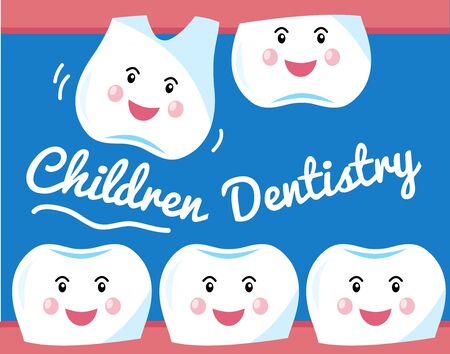Introduction to Cosmetic Dental Procedures
When it comes to improving your smile, there are several cosmetic dental procedures to choose from. Whether you want a brighter smile, fix chipped teeth, or completely transform your look, different treatments offer unique benefits and costs. Understanding the options available can help you make an informed decision that fits both your aesthetic goals and budget.
Popular Cosmetic Dental Treatments
Cosmetic dentistry includes a variety of treatments designed to enhance the appearance of your teeth. Some of the most common procedures include veneers, teeth whitening, bonding, and crowns. Each option serves a different purpose and varies in cost-effectiveness depending on your needs.
Veneers
Veneers are thin shells made of porcelain or composite resin that cover the front surface of your teeth. They are a great solution for individuals looking to correct discoloration, gaps, chips, or minor misalignment. Veneers provide a long-lasting and natural-looking enhancement but can be more expensive than other options.
Teeth Whitening
Teeth whitening is one of the most affordable and non-invasive cosmetic dental treatments. It helps remove stains caused by food, drinks, and aging. While professional whitening treatments offer better results than over-the-counter products, they do not last as long as veneers or crowns.
Dental Bonding
Bonding involves applying a tooth-colored resin material to repair chips, cracks, or discoloration. This procedure is more affordable than veneers but may not be as durable. Bonding is ideal for minor cosmetic issues but may require touch-ups over time.
Crowns
Crowns are caps placed over damaged or weak teeth to restore their shape, size, and appearance. They are often used for severely decayed or broken teeth. While crowns offer strong protection and durability, they tend to be more expensive than bonding or whitening.
Comparison of Popular Cosmetic Dental Procedures
| Treatment | Main Benefit | Durability | Cost Range |
|---|---|---|---|
| Veneers | Covers imperfections & provides a long-term solution | 10-15 years | $800-$2,500 per tooth |
| Teeth Whitening | Brightens and removes stains | A few months to 3 years | $100-$600 per session |
| Bonding | Fixes minor chips & discoloration affordably | 3-10 years | $100-$400 per tooth |
| Crowns | Covers & protects severely damaged teeth | 10-15 years | $800-$3,000 per tooth |
The best cosmetic dental procedure depends on your specific needs and budget. If youre looking for a long-term investment with natural aesthetics, veneers might be the right choice. However, if you need a quick fix at a lower cost, bonding or teeth whitening could work better for you. In the following sections, we’ll explore how these treatments compare in terms of cost-effectiveness and which option offers the best value for money.
2. What Are Veneers? Pros and Cons
Veneers are a popular cosmetic dental procedure used to enhance the appearance of teeth. They are thin, custom-made shells designed to cover the front surface of teeth, improving their shape, color, and overall look. Veneers are typically made from porcelain or composite resin and are permanently bonded to the teeth.
Types of Veneers
There are two main types of veneers: porcelain and composite resin. Each type has its own advantages and potential drawbacks.
| Type | Pros | Cons |
|---|---|---|
| Porcelain Veneers | – Natural-looking appearance – Stain-resistant – Long-lasting (10-15 years) – Durable |
– More expensive – Requires enamel removal – Irreversible procedure |
| Composite Resin Veneers | – More affordable – Less enamel removal required – Can be repaired easily – Faster process (often done in one visit) |
– Less durable than porcelain – Prone to staining over time – Shorter lifespan (5-7 years) |
Pros of Veneers
- Aesthetic Enhancement: Veneers can correct discoloration, chips, gaps, and misaligned teeth, providing a perfect smile.
- Natural Look: Porcelain veneers closely mimic natural tooth enamel, making them an excellent choice for a realistic appearance.
- Stain Resistance: Unlike natural teeth, porcelain veneers resist stains from coffee, tea, and other common culprits.
- Minimally Invasive: Compared to crowns, veneers require less removal of the natural tooth structure.
- Quick Transformation: The process usually takes just two to three visits to complete.
Cons of Veneers
- Permanence: Once the enamel is removed for veneer placement, it cannot be restored.
- Sensitivity: Some patients experience temporary tooth sensitivity after getting veneers.
- Lifespan & Maintenance: While durable, veneers may eventually need replacement due to wear or damage.
- Cost: Veneers can be expensive, especially if multiple teeth require treatment.
- Potential Damage: Though strong, veneers can chip or crack under excessive pressure from habits like nail-biting or teeth grinding.
Are Veneers Right for You?
If you’re looking for a long-lasting solution for cosmetic dental issues and are willing to invest in maintenance and care, veneers might be a great option. However, considering the cost and permanence of the procedure, it’s essential to weigh the pros and cons before making a decision.

3. Comparison: Veneers vs. Other Cosmetic Treatments
When considering cosmetic dental procedures, it’s important to compare veneers with other popular options like teeth whitening, dental bonding, and crowns. Each treatment has its own advantages in terms of aesthetics, durability, and procedure time.
Aesthetics
Veneers provide a dramatic transformation by covering imperfections such as discoloration, chips, or gaps. They offer a natural look with a custom shade and shape that matches your existing teeth. Teeth whitening, on the other hand, only improves color but does not correct structural flaws. Dental bonding can address minor imperfections but may not look as seamless as veneers. Crowns cover the entire tooth and are usually recommended for more severe damage rather than purely cosmetic purposes.
Durability
When it comes to longevity, veneers are highly durable, lasting between 10 to 15 years with proper care. Crowns are even more long-lasting, often exceeding 15 years. Dental bonding is less durable and may require touch-ups every 5 to 7 years. Teeth whitening provides the shortest-lasting results, typically requiring maintenance every few months or annually depending on lifestyle factors like diet and oral care habits.
Procedure Time
The time commitment for each treatment varies. Veneers generally require two to three visits—one for consultation and impressions, another for tooth preparation, and a final visit for placement. Teeth whitening is the quickest option, often completed in a single session at the dentist’s office or through take-home kits over a few weeks. Dental bonding can be done in one visit but may need periodic repairs over time. Crowns typically take two visits—one for preparation and impressions and another for final placement.
Side-by-Side Comparison
| Treatment | Aesthetics | Durability | Procedure Time |
|---|---|---|---|
| Veneers | Dramatic improvement in shape, color, and alignment | 10-15 years with proper care | 2-3 visits |
| Teeth Whitening | Enhances color but doesn’t correct structural flaws | A few months to a year with maintenance | One session or multiple weeks with at-home kits |
| Dental Bonding | Covers small imperfections but may not blend perfectly | 5-7 years before touch-ups needed | A single visit |
| Crowns | Covers entire tooth; best for severely damaged teeth | 15+ years with good care | Two visits required |
This comparison highlights how veneers stand out as a long-term solution for those looking for significant cosmetic improvements while balancing durability and aesthetics. However, alternatives like teeth whitening and dental bonding offer quicker solutions at lower costs for those seeking minimal enhancements.
4. Cost Analysis: Which Option Offers the Best Value?
When considering cosmetic dental procedures, cost is a major factor. While veneers are a popular option, other treatments like bonding, teeth whitening, and crowns also provide aesthetic improvements. Let’s break down the costs associated with each procedure, taking into account longevity, maintenance, and overall investment.
Comparing Costs of Cosmetic Dental Procedures
The cost of cosmetic dentistry varies depending on factors such as materials, complexity, and required maintenance. Below is a comparison of common procedures:
| Procedure | Average Cost (per tooth) | Longevity | Maintenance Requirements |
|---|---|---|---|
| Veneers | $900 – $2,500 | 10-15 years | Minimal; may need replacement over time |
| Dental Bonding | $250 – $600 | 3-10 years | Prone to staining; may require touch-ups |
| Teeth Whitening | $300 – $1,000 (full treatment) | 6 months – 3 years | Requires regular touch-ups |
| Crowns | $800 – $2,500 | 10-15 years | May need replacement if damaged or worn out |
Longevity vs. Upfront Cost: Which is More Cost-Effective?
While veneers have a higher initial cost compared to bonding or whitening, their durability makes them a long-term investment. Teeth whitening is the most affordable option upfront but requires ongoing treatments to maintain results. Bonding offers a middle-ground solution but may not be as durable as veneers or crowns.
The Best Value for Your Money
If you’re looking for a long-lasting solution with minimal maintenance, veneers or crowns might be the best choice despite the higher upfront cost. However, if you need a quick and budget-friendly fix, bonding or whitening can still enhance your smile at a lower price.
Key Takeaways:
- Veneers: High initial cost but long-lasting and low maintenance.
- Bonding: More affordable upfront but may require frequent repairs.
- Teeth Whitening: Cheapest option but requires ongoing treatments.
- Crowns: Similar to veneers in durability but often used for restorative purposes.
Your choice will depend on your budget, desired results, and how long you want your dental enhancements to last.
5. Choosing the Right Option for Your Needs
When it comes to cosmetic dental procedures, choosing the most cost-effective option depends on several factors, including your personal goals, budget, and oral health condition. Veneers are a popular choice, but they may not be the best fit for everyone. Lets break down the key considerations to help you make an informed decision.
Factors to Consider
Your Aesthetic Goals
If youre looking for a complete smile makeover with perfectly shaped and aligned teeth, veneers might be the best solution. However, if you only need minor corrections like whitening or slight reshaping, treatments such as teeth whitening or bonding could be more cost-effective.
Your Budget
Different procedures come with different price points. Heres a comparison of common cosmetic dental treatments:
| Treatment | Average Cost (Per Tooth) | Longevity |
|---|---|---|
| Veneers | $900 – $2,500 | 10-15 years |
| Dental Bonding | $300 – $600 | 3-10 years |
| Teeth Whitening | $200 – $1,000 | A few months to 3 years |
| Crowns | $800 – $2,500 | 10-15 years |
| Invisalign | $3,000 – $7,000 | Varies by case |
Your Oral Health Condition
The current state of your teeth plays a big role in determining which procedure is best for you. For example:
- If you have healthy teeth but want a brighter smile, professional whitening may be enough.
- If you have chipped or slightly misaligned teeth, bonding or veneers could work well.
- If you have significant damage or decay, crowns might be necessary instead of veneers.
- If alignment issues are your main concern, Invisalign could be the better investment.
The Best Choice for You
The right procedure depends on balancing your cosmetic goals, financial situation, and oral health needs. Consulting with a dentist can help you weigh your options and choose the most cost-effective treatment that aligns with your desired results.


